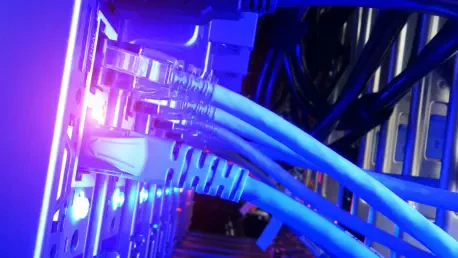The broadband equipment vendor market finds itself in a state of flux following Charter Communications’ monumental acquisition of Cox Communications. This $34.5 billion merger is not only one of the largest in the telecom sector but also heralds a shift towards further consolidation in the broadband industry. As major players like Charter and Cox unite, the ripple effects are expected to stimulate a surge in mergers and acquisitions among broadband equipment vendors.
Industry Overview
The broadband vendor market plays a crucial role in today’s economy by providing the necessary infrastructure for continuous connectivity. This sector encompasses various segments, including virtualized cable modem termination systems (vCMTS) and remote PHY systems, each influenced by technological advances. Regulatory frameworks govern this field, requiring vendors to stay abreast of compliance changes to remain competitive. Major market players like Harmonic and Vecima are particularly significant as they continue to dominate certain domains within broadband technology.
With the increasing demand for high-speed internet services, these vendors have expanded their offerings to include more innovative solutions. The complex interplay between regulation, technological advancement, and market needs drives these vendors to constantly innovate while adhering to stringent industry standards.
Current Industry Trends
Influential Developments
The broadband vendor market is undergoing significant evolution driven by technological innovations and shifting consumer behaviors. Emerging technologies like DOCSIS 4.0, which supports enhanced data transmission over hybrid fiber coax (HFC) lines, are paving the way for more robust network infrastructures. Consumer demand for faster internet and reliable services pushes vendors to continually upgrade their offerings, providing new opportunities for market expansion.
Vendors are capitalizing on these trends by investing in advanced network solutions and adapting to market drivers such as increased reliance on remote work and online services. This environment presents both challenges and avenues for growth as companies navigate the dynamic landscape.
Market Analysis
Recent data indicates steady growth in the broadband vendor market, with projections showing increased demand for network upgrades and expansions. Market performance indicators highlight a robust trajectory for the coming years, underscored by the ongoing need for advanced broadband solutions. The acquisition activities spurred by the Charter-Cox merger are expected to drive further market consolidation, with companies seeking strategic alignments to bolster their positions.
Forecasts suggest that the market will continue to expand, fueled by technological advancements and the consolidation of service providers. This growth is further supported by the increasing integration of cutting-edge technologies into existing broadband infrastructures.
Challenges and Solutions
Despite the optimism surrounding market expansion, the broadband vendor industry encounters several challenges, particularly in technology and regulation. Keeping pace with rapid technological advancements while ensuring regulatory compliance poses significant hurdles. Vendors need to employ strategies that allow them to efficiently merge existing systems while adopting emerging technologies like DOCSIS 4.0.
Potential solutions involve strategic planning and adopting flexible architectures that can accommodate future developments. Post-merger integration will require meticulous assessments of existing infrastructure to ensure compatibility and smooth transitions for vendors involved. Addressing these challenges head-on will be key to sustaining growth and maintaining competitive advantage.
Regulatory Landscape
The regulatory environment for broadband equipment vendors is intricate, characterized by a complex web of laws and standards. These regulations are designed to ensure fair competition and secure network infrastructures. Compliance with these requirements is paramount, as non-conformity could result in penalties and operational hurdles.
With the telecom industry’s recent consolidation trends, adapting to regulatory changes becomes increasingly critical. Vendors must navigate evolving security measures and compliance mandates to sustain their market presence. This regulatory landscape demands diligent oversight and proactive planning to align with industry practices and expectations.
Future Directions
Looking ahead, the broadband vendor market is poised for further evolution as it adapts to emerging technologies and shifting consumer preferences. The integration of innovative solutions like AI-driven networks and advanced data processing capabilities is expected to redefine market dynamics. Potential disruptors could arise from unforeseen technological breakthroughs or shifts in consumer behavior, necessitating agility within the industry.
Global economic conditions, along with ongoing technological innovation, will play significant roles in shaping the industry’s trajectory. Vendors focused on innovation and adaptability, coupled with strategic regulatory compliance, will find themselves in favorable positions to capitalize on future opportunities.
Conclusion and Recommendations
In light of the Charter-Cox merger, the broadband vendor market stands at the forefront of a transformative period. The consolidation of service providers is expected to trigger a wave of strategic mergers among equipment vendors, aiming to meet the demands of the new industry landscape. Companies are advised to consider strategic partnerships and investments in emerging technologies to remain competitive.
Recommendations for growth include leveraging emerging technologies to enhance service offerings and adopting flexible strategies that anticipate regulatory changes. As the market continues to evolve, vendors positioned for innovation and compliance should anticipate success, paving the way for new levels of technological advancement and connectivity.









